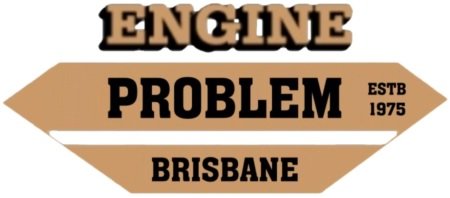Cylinder Head Assembly
ENGINE ASSEMBLY HINTS
Cylinder head assembly…… Modern engines are basically the same in the bottom end as they were 50 years ago. The advancement has been in the cylinder head area. Current cylinder head design has been pushed ahead because of the requirements to meet stricter pollution and economy levels. Also the public’s increasing appetite for faster and more powerful cars has prompted the car manufacturers to compete for sales using sophisticated engine design as the main weapon. The designs are also leaning more towards cam belt driven, shim adjustable, multi- camshaft heads. Even with the complex designs used today all the basic assembly procedures still apply. ( THEY ARE ACTUALLY BECOMING MORE IMPORTANT AS THE NEW HEADS ARE LESS FORGIVING.) Final wash cleanliness is critical to satisfactory cylinder head operation.
Shim adjustable tappets require dummy assembly to establish a starting point for the shim adjustment. Keep in mind that the clearance can change slightly once the final assembly takes place with the valve springs fitted. Quite often the clearance opens up as the cam is pushed upwards by valve spring tension. The amount of change will vary according to the wear factor between the cam journal and the cam tunnel. Recheck clearances after final assembly.
Lubrication of the valve guides to stem on any head is very important. The best way of ensuring good coverage of oil in the guide when assembling is to firstly oil down the guide, then oil the valve stem, place the valve in the guide holding one finger lightly over the seal end of the guide, push the valve nearly to the end of the guide working it back and forth a couple of times. Until you are sure of your technique remove the valve and visibly check with a light that you got 100% coverage in the guide. Remember valve guides are not pressure fed and are normally fitted with a positive seal to prevent oil entering the guide. So the only oil that will prevent that guide wearing or seizing is your assembly oil.All heads should be vacuum tested to check valve/ seat seal. Carry this test out with a dry clean head before fitting valve springs. If springs have to be fitted before a satisfactory vacuum test is achieved the valves and seats are not concentric. ( the seats should be syncro- seated or re- cut) The engine will run OK, but the guide and valve face life will be drastically reduced. Valve springs should be tested before re- use. All seat and valve heights should be within specifications. Diesel engines rely upon correct valve height to maintain the correct compression.
Fitting the cylinder head…… the most important gasket in an engine is the head gasket. Warranty research data shows that head gasket problems are the most common warranty claims. Due to the extreme environment a head gasket works under, it is very important to get it right the first time. Maintaining the correct clamping pressure between the head and block is the most important factor from preventing head gasket failure.
Always check that the gasket being used is of good quality and suitable for the correct application. Some diesels have different thickness gaskets and will not perform if the wrong gasket is selected. Make sure the mating faces are dry and clean of oil residue. Verify that the gasket is being fitted the correct way up. If it is OHC the engine should be on TDC and the camshaft positioned in the head to correspond, before being fitted to the block. If the cam timing is incorrect the open valves could be bent as the head is being tensioned down. Place head gasket on the block face using the block dowels to locate the gasket. Check the position of the oil feed hole. Check the coverage of the waterways. Check the position of the combustion sealing ring in relation to the cylinder bores. Ensure the sealing ring of gasket doesn’t protrude past the cylinder bores. Place the cylinder head on the block being careful not to contact the face with the block dowels. Check head studs for stretch as some of these “tension to yield” head studs have to be replaced. Lightly oil the threads on the head studs or seal the threads if it is required by the manufacturer. Lubricate the contact area of the head stud. Torque the head studs to the correct tension using a minimum of three stages, working outwards in a staggered pattern from the centre.( some heads have a special sequence, especially any with two different size bolts or three rows of bolts. Always check manufacturers spec. if not sure.)
Adjustable tappets should be accurately adjusted to .001″ (.025mm) above book clearance. This ensures no tappets will be under minimum clearance during the first 800 kms. At the first service (800 km) the tappets should be re-adjusted.
: Every care has been taken in writing this information and procedures, but no responsibility can be excepted for errors, omissions or misuse of this information and procedures. The information available on this site is for your instruction only and cannot be copied for sale, © copyright 2020 UMR Engines www.engineproblem.com.au
